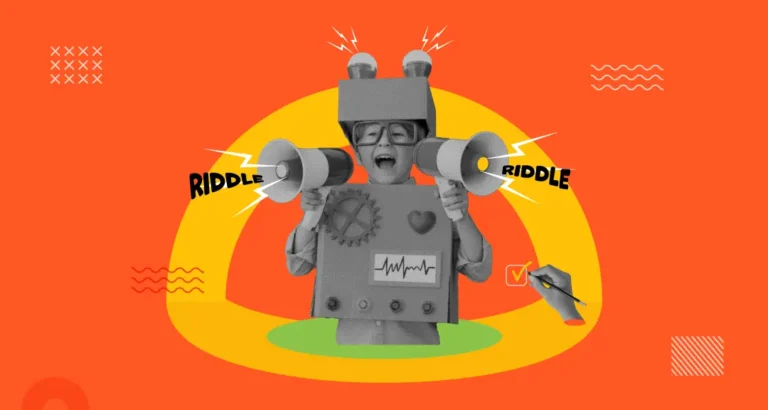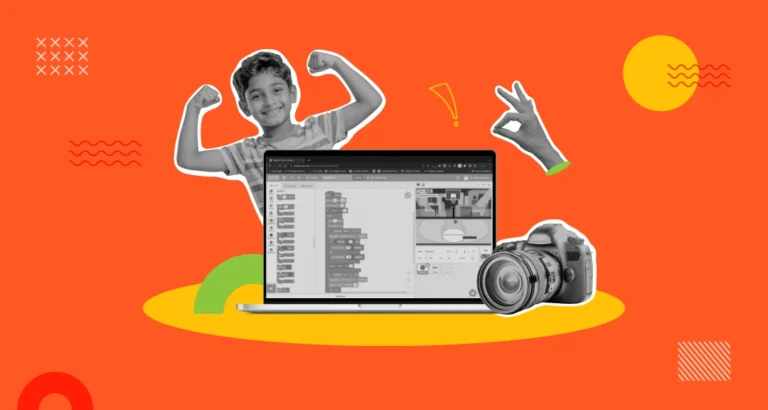Social Learning Theory 101: Understanding How Children Learn from Others
- Parenting, Teaching
- April 12, 2025
- VOLT Learning
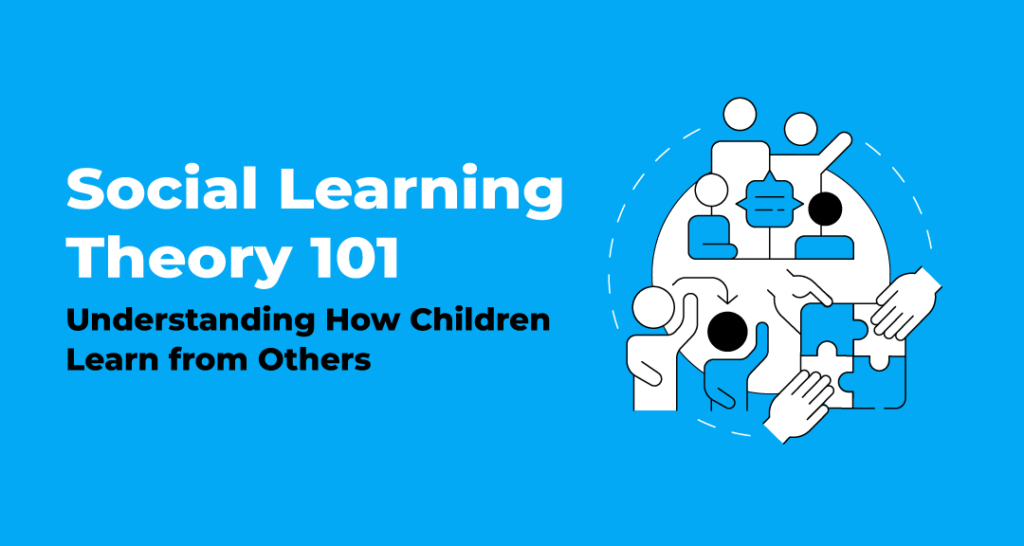
“Monkey see, monkey do.” Have you ever wondered how accurate that phrase is—especially for kids?
If you’ve ever caught a child mimicking your tone of voice, repeating a phrase you didn’t even know you said often, or copying how you sit or eat—you’ve already witnessed social learning in action. Long before formal lessons or textbooks enter the picture, children learn from the world by watching, listening, and imitating.
But how does this fascinating process work? That’s where Social Learning Theory explains what’s going on behind those little eyes soaking in everything they see.
What is Social Learning Theory?
Developed by psychologist Albert Bandura in the 1960s, Social Learning Theory suggests that people—especially children—learn new behaviors by observing others. It’s not just about passive watching; it’s about noticing what happens next. Do they get praised? Do they get in trouble? What’s the outcome?
Bandura’s social learning theory challenged the traditional reinforcement-based learning ideas. Instead, he proposed using observational learning coupled by imitation and modeling to demonstrate how children learn and adopt new behaviors. His groundbreaking Bobo Doll Experiment proved to be the most iconic study of its time by showing how strong observational learning could be.
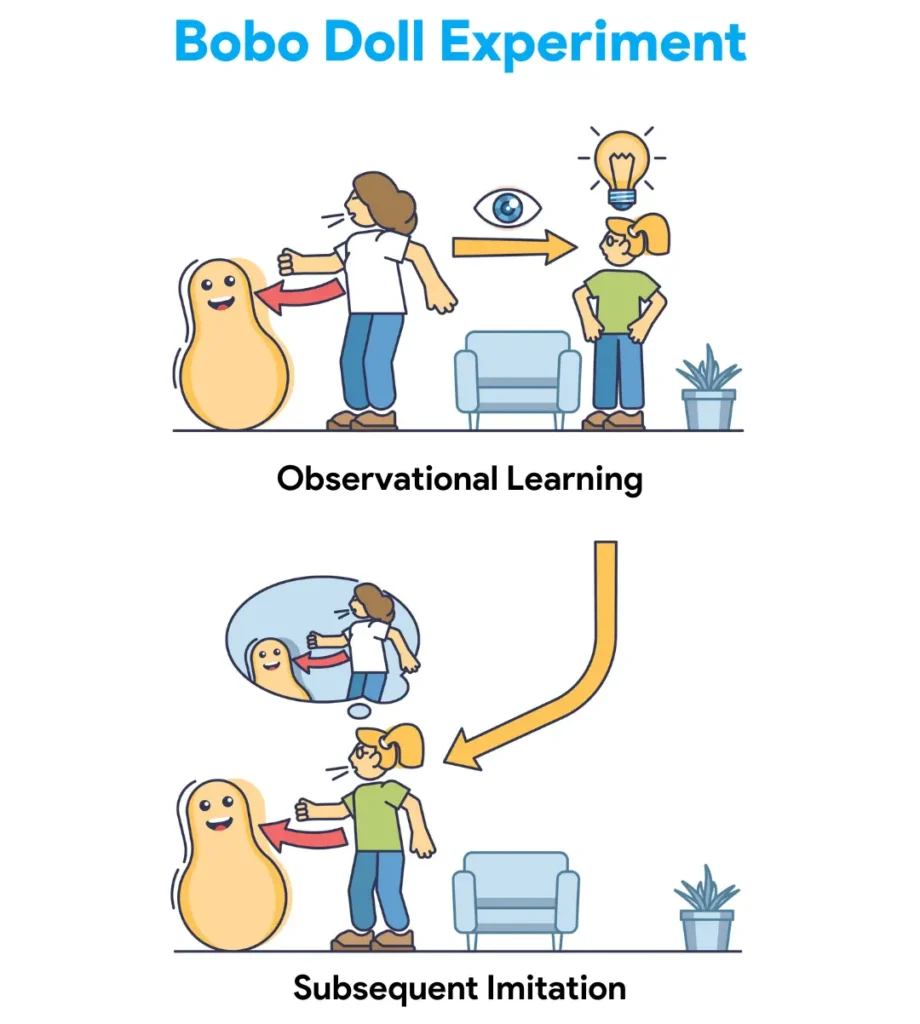
In the experiment, children watched adults interacting with an inflatable clown doll (the “Bobo doll”). Some adults acted aggressively toward the doll, hitting, kicking, and yelling at it, while others behaved calmly or didn’t interact.
What happened next? The children who saw the aggressive behavior were far more likely to imitate it—some even came up with new ways to be aggressive with the doll. Meanwhile, those who saw non-aggressive models often played peacefully. The experiment showed that children don’t need to experience something firsthand to learn it..
The Four Key Processes of Social Learning Theory
Social-emotional learning isn’t a simple one-step journey; it’s a 360-degree process. Albert Bandura’s social learning theory has four essential stages, each with its unique role. Let’s explore:
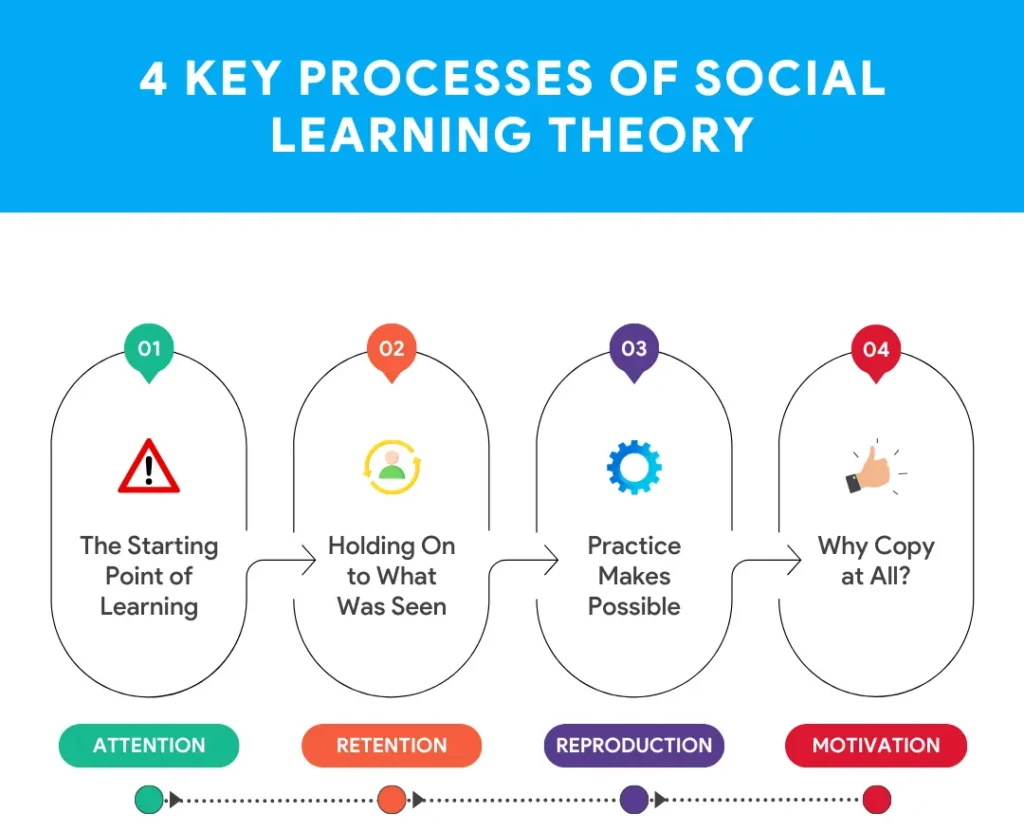
1. Attention: The Starting Point of Learning
Before a child can learn from someone else, they notice the behaviour first. But not all behaviors grab attention equally. Several factors determine whether a child pays attention, such as the behavior’s uniqueness, how emotionally engaging it is, or how much they admire the person performing it. Children are naturally more inclined to watch people and perceive them as their role models, who can be anybody—a parent, teacher, older sibling, or even a peer.
Example: A student might sit up straighter and tune in closely when a popular or high-achieving classmate gets praised for confidently answering a question. If the observing student wants to be seen in a similar light, their attention is instantly captured.
2. Retention: Holding On to What Was Seen
Observing a behavior is one thing, but remembering it for a long time is another. The second stage in Social Learning Theory is about encoding what was observed into memory, which kids can recall and reproduce later. Retention depends on the child’s ability to rehearse or visualize the behavior mentally. Verbal cues, repetition, and clarity can all improve how well something is remembered.
Example: After watching a friend tie their shoelaces using a new technique, a child might mentally walk through each step—looping, crossing, pulling—so they can try it later. Even if they don’t practice it immediately, they have restored it as a memory until the opportunity arises.
3. Reproduction: Practice Makes Possible
Children typically repeat behaviors that they have previously observed. Learning the skill, combined with attention skills, does not result in success; you must develop physical abilities along with proper coordination and build your presentation confidence to execute it definitively. The initial reproduction stage usually proves imperfect since children typically attempt actions before failing and adapting their attempts until success. Practice functions as the key component during this particular stage.
Example: After watching a peer solve a tricky math puzzle on the board using a new strategy, a student might attempt the same method during their turn. Their first try might be clumsy, but repeated efforts help refine their skill. The reproduction stage is where the learning becomes visible—and potentially habitual.
4. Motivation: Why Copy at All?
Even if a child can copy a behavior, they won’t bother unless they have a reason. Motivation can come from external rewards (like praise or prizes), internal satisfaction (like pride or curiosity), or watching someone else benefit from the behavior.
This step explains why not all observed behaviors are copied. If the child sees negative consequences or no payoff, they’re less likely to imitate it.
Example: Students observe their classmates receiving appreciation and stickers as rewards upon completing homework within specified periods. Positive outcomes from completing homework assignments on time lead students to continue on-time work even if schoolwork seems dull. A potential reward is a magnet to encourage people to learn new habits. Social disapproval following a specific behavior reduces the likelihood of others copying it, while vicarious reinforcement or punishment influences the replication process.
How Do Teachers Use Social-Emotional Learning Strategies in Classrooms?
Great teachers don’t just teach—they model, inspire, and create contagious learning environments. Educators can encourage students to learn from one another by tapping into social learning principles, turning everyday classroom interactions into rich learning opportunities.
Let’s explore four effective strategies grounded in Social Learning Theory and how they play out in real classrooms:
1. Peer Modeling
Peer modeling is an effective mechanism that allows students to show and imitate behaviors or skills that their peers can witness. Success occurs because children relate more easily to someone who shares their characteristics and demonstrates achievement. The approach enhances self-assurance by lowering failure dread and generating a collective success experience.
Real-World Scenario: Within such a classroom environment, many students shy away from public reading duties in front of their classmates. The teacher will choose a student who has successfully overcome reading fear to function as a model student for reading confidently. The student shows appropriate reading speed, distinct speech, and positive energy throughout their reading performance. A student who successfully handles the task at their age level helps other classmates overcome their reading fears while avoiding the risk of mistakes. Eventually, all students began participating in classroom readings because they adopted the model student’s positive mindset. Reading aloud transforms a stressful experience into an educational opportunity for students to learn and develop together because of consistent growth in the classroom.
2. Group Learning Activities
Social learning reaches its highest point in environments that promote complete teamwork and collaborative practices. In group work, students witness how their classmates solve problems and accept each other’s communication patterns.
Real-World Scenario: In a science lab, a teacher can divide students into pairs and assign tasks related to basic circuit-building. One student is confident and quickly sets up the components, while the other observes and asks questions. Students gain understanding by observing and discussing with others when they participate in hands-on activities. Students learn more efficiently when their knowledge exchange occurs in collaborative settings where skills are transferred naturally between each other.
3. Positive Reinforcement in Public
When teachers encourage students to recognize and celebrate positive behavior whenever possible in front of other students, they motivate students more and boost their confidence level. Also, such a public reinforcement activity sends the class a clear (and positive) message about what behavior is valued.
Real-World Scenario: A teacher notices a student handling a disagreement calmly and respectfully during a group discussion. When she pauses the session to praise this student’s choice of words and highlights how effectively s/he approached aversive situations and unpleasant stimuli, the class understands that kindness and composure are recognized.
Over time, students internalize these social cues and start self-regulating, aiming to align their behavior with the positive examples they see being rewarded.
4. Role-Playing and Simulations
Role-playing is considered the most influential social learning approach for the students as it encourages them to step into someone else’s shoes, act out differently in real-world scenarios, and experiment with different responses. This way, kids become active participants in developing social skills by understanding different perspectives when they explore numerous consequences in a low-risk setting.
Real-World Scenario: During a “conflict resolution” activity, the teacher can ask two students to engage in a “pretend-and-roleplay” scenario for a typical classroom issue, i.e., two students want to play separately with the same toy at the same time, which creates a pretend conflict. Here’s how
- Student 1: He will pretend to be upset or angry because he did not get the toy at the desired time.
- Student 2: She will pretend to handle the situation calmly by practicing healthy ways of expressing emotions using ‘I feel’ statements instead of responding to other students’ anger with similar emotions. She will try to calm down the frustrated student by saying something like, “I feel sad when I can’t play with the toy, too.” “I feel frustrated when we both want the same thing.”
Adopting positive “I feel” statements is a powerful social-emotional learning magnet and helps children express themselves calmly. Simply put, one student pretends to be upset about the conflict, while the other practices using kind, clear words to express their feelings.
The other children in the classroom will observe and discuss what went well and what could be done differently. This type of interactive learning deepens understanding and gives students a toolkit of responses they can draw from in real-life situations.
Challenges and Criticisms of Albert Bandura’s Social Learning Theory
When teachers incorporate the above-discussed Social Learning strategies into their daily teaching practice, they encourage children to participate in each other’s learning journey actively. Whether copying a skill, mirroring a behavior, or simply getting inspired, social learning helps classrooms become communities where everyone grows together.
However, some researchers argue that the Social Learning theory emphasizes too much on environmental influences—such as role models and reinforcement—while underplaying the role of individual personality traits, biological factors, and innate temperament.
Others point out that the theory treats children uniformly, without fully accounting for the different developmental stages that influence how children learn and what motivates them. For instance, what an older child can understand and imitate might be far too complex for a younger one.
Additionally, there’s concern that this influential theory reflects children as passive observers who absorb behaviors without any questions—and for this reason, it has faced criticism. The reality check: Children are often active observers powered by critical thinking capabilities who engage with what they see in nuanced ways.
Despite these critiques, most educators and psychologists agree that observation and imitation remain potent drivers of early learning in children. When combined thoughtfully with other educational approaches, Social Learning Theory is a valuable asset supporting children’s overall growth inside and beyond.
Conclusion: Watch. Learn. Repeat.
Learning would be exceedingly laborious, not to mention hazardous, if people had to rely solely on the effects of their own actions to inform them what to do. Fortunately, most human behavior is learned observationally through modeling: from observing others, one forms an idea of how new behaviors are performed, and on later occasions, this coded information serves as a guide for action. — ALBERT BANDURA – 1977 (Source)
Bandura’s Social Learning Theory reminds us that children are always watching, observing and learning. During this journey of observational social learning, anybody could be their role models – a teacher, a peer, or even a cartoon character because they all offer a potential learning opportunity to the children. So, dear teachers, always remember: the behavior you model in the classroom sets the tone for your students—because every moment and every action matters.
So, dear teachers and parents, remember this: Make sure you model the behavior you want to see in your child because every moment matters.
>> Please Share

